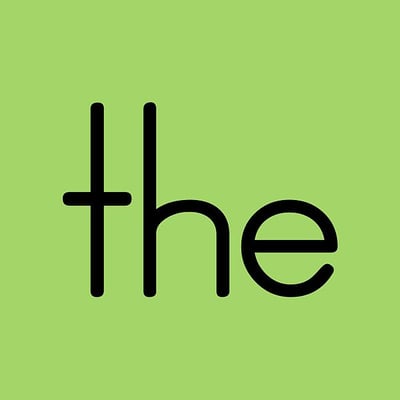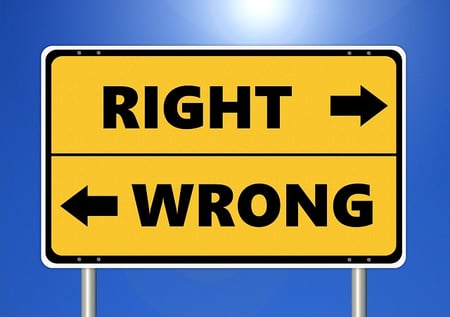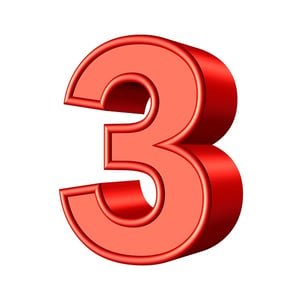When you start breaking it down, the English language is pretty complicated—especially if you’re trying to learn it from scratch! One of the most important English words to understand is the.
But what part of speech is the word the, and when should it be used in a sentence? Is the word the a preposition? Is the a pronoun? Or is the word the considered a different part of speech?
To help you learn exactly how the word the works in the English language, we’re going to do the following in this article:
- Answer the question, «What part of speech is the?»
- Explain how to use the correctly in sentences, with examples
- Provide a full list of other words that are classified as the same part of speech as the in the English language
Okay, let’s get started learning about the word the!
In the English language the word the is classified as an article, which is a word used to define a noun. (More on that a little later.)
But an article isn’t one of the eight parts of speech. Articles are considered a type of adjective, so «the» is technically an adjective as well. However, «the» can also sometimes function as an adverb in certain instances, too.
In short, the word «the» is an article that functions as both an adjective and an adverb, depending on how it’s being used. Having said that, the is most commonly used as an article in the English language. So, if you were wondering, «Is the a pronoun, preposition, or conjunction,» the answer is no: it’s an article, adjective, and an adverb!
While we might think of an article as a story that appears in a newspaper or website, in English grammar, articles are words that help specify nouns.
The as an Article
So what are «articles» in the English language? Articles are words that identify nouns in order to demonstrate whether the noun is specific or nonspecific. Nouns (a person, place, thing, or idea) can be identified by two different types of articles in the English language: definite articles identify specific nouns, and indefinite articles identify nonspecific nouns.
The word the is considered a definite article because it defines the meaning of a noun as one particular thing. It’s an article that gives a noun a definite meaning: a definite article. Generally, definite articles are used to identify nouns that the audience already knows about. Here’s a few examples of how «the» works as a definite article:
We went to the rodeo on Saturday. Did you see the cowboy get trampled by the bull?
This (grisly!) sentence has three instances of «the» functioning as a definite article: the rodeo, the cowboy, and the bull. Notice that in each instance, the comes directly before the noun. That’s because it’s an article’s job to identify nouns.
In each of these three instances, the refers to a specific (or definite) person, place, or thing. When the speaker says the rodeo, they’re talking about one specific rodeo that happened at a certain place and time. The same goes for the cowboy and the bull: these are two specific people/animals that had one kinda terrible thing happen to them!
It can be a bit easier to see how definite articles work if you see them in the same sentence as an indefinite article (a or an). This sentence makes the difference a lot more clear:
A bat flew into the restaurant and made people panic.
Okay. This sentence has two articles in it: a and the. So what’s the difference? Well, you use a when you’re referring to a general, non-specific person, place, or thing because its an indefinite article. So in this case, using a tells us this isn’t a specific bat. It’s just a random bat from the wild that decided to go on an adventure.
Notice that in the example, the writer uses the to refer to the restaurant. That’s because the event happened at a specific time and at a specific place. A bat flew into one particular restaurant to cause havoc, which is why it’s referred to as the restaurant in the sentence.
The last thing to keep in mind is that the is the only definite article in the English language, and it can be used with both singular and plural nouns. This is probably one reason why people make the mistake of asking, «Is the a pronoun?» Since articles, including the, define the meaning of nouns, it seems like they could also be combined with pronouns. But that’s not the case. Just remember: articles only modify nouns.
Adjectives are words that help describe nouns. Because «the» can describe whether a noun is a specific object or not, «the» is also considered an adjective.
The as an Adjective
You know now that the is classified as a definite article and that the is used to refer to a specific person, place, or thing. But defining what part of speech articles are is a little bit tricky.
There are eight parts of speech in the English language: nouns, pronouns, verbs, adverbs, adjectives, prepositions, conjunctions, and interjections. The thing about these eight parts of speech in English is that they contain smaller categories of types of words and phrases in the English language. Articles are considered a type of determiner, which is a type of adjective.
Let’s break down how articles fall under the umbrella of «determiners,» which fall under the umbrella of adjectives. In English, the category of «determiners» includes all words and phrases in the English language that are combined with a noun to express an aspect of what the noun is referring to. Some examples of determiners are the, a, an, this, that, my, their, many, few, several, each, and any. The is used in front of a noun to express that the noun refers to a specific thing, right? So that’s why «the» can be considered a determiner.
And here’s how determiners—including the article the—can be considered adjectives. Articles and other determiners are sometimes classified as adjectives because they describe the nouns that they precede. Technically, the describes the noun it precedes by communicating specificity and directness. When you say, «the duck,» you’re describing the noun «duck» as referring to a specific duck. This is different than saying a duck, which could mean any one duck anywhere in the world!
When «the» comes directly before a word that’s not a noun, then it’s operating as an adverb instead of an adjective.
The as an Adverb
Finally, we mentioned that the can also be used as an adverb, which is one of the eight main parts of speech we outlined above. Adverbs modify or describe verbs, adjectives, or other adverbs, but never modify nouns.
Sometimes, the can be used to modify adverbs or adjectives that occur in the comparative degree. Adverbs or adjectives that compare the amounts or intensity of a feeling, state of being, or action characterizing two or more things are in the comparative degree. Sometimes the appears before these adverbs or adjectives to help convey the comparison!
Here’s an example where the functions as an adverb instead of an article/adjective:
Lainey believes the most outrageous things.
Okay. We know that when the is functioning as an adjective, it comes before a noun in order to clarify whether it’s specific or non-specific. In this case, however, the precedes the word most, which isn’t a noun—it’s an adjective. And since an adverb modifies an adjective, adverb, or verb, that means the functions as an adverb in this sentence.
We know that can be a little complicated, so let’s dig into another example together:
Giovanni’s is the best pizza place in Montana.
The trick to figuring out whether the article the is functioning as an adjective or an adverb is pretty simple: just look at the word directly after the and figure out its part of speech. If that word is a noun, then the is functioning as an adjective. If that word isn’t a noun, then the is functioning like an adverb.
Now, reread the second example. The word the comes before the word best. Is best a noun? No, it isn’t. Best is an adjective, so we know that the is working like an adverb in this sentence.
How to Use The Correctly in Sentences
An important part of answering the question, «What part of speech is the word the?» includes explaining how to use the correctly in a sentence. Articles like the are some of the most common words used in the English language. So you need to know how and when to use it! And since using the as an adverb is less common, we’ll provide examples of how the can be used as an adverb as well.
Using The as an Article
In general, it is correct and appropriate to use the in front of a noun of any kind when you want to convey specificity. It’s often assumed that you use the to refer to a specific person, place, or thing that the person you’re speaking to will already be aware of. Oftentimes, this shared awareness of who, what, or where «the» is referring to is created by things already said in the conversation, or by context clues in a given social situation.
Let’s look at an example here:
Say you’re visiting a friend who just had a baby. You’re sitting in the kitchen at your friend’s house while your friend makes coffee. The baby, who has been peacefully dozing in a bassinet in the living room, begins crying. Your friend turns to you and asks, «Can you hold the baby while I finish doing this?»
Now, because of all of the context surrounding the social situation, you know which baby your friend is referring to when they say, the baby. There’s no need for further clarification, because in this case, the gives enough direct and specific meaning to the noun baby for you to know what to do!
In many cases, using the to define a noun requires less or no awareness of an immediate social situation because people have a shared common knowledge of the noun that the is referring to. Here are two examples:
Are you going to watch the eclipse tomorrow?
Did you hear what the President said this morning?
In the first example, the speaker is referring to a natural phenomenon that most people are aware of—eclipses are cool and rare! When there’s going to be an eclipse, everyone knows about it. If you started a conversation with someone by saying, «Are you going to watch the eclipse tomorrow?» it’s pretty likely they’d know which eclipse the is referring to.
In the second example, if an American speaking to another American mentions what the President said, the other American is likely going to assume that the refers to the President of the United States. Conversely, if two Canadians said this to one another, they would likely assume they’re talking about the Canadian prime minister!
So in many situations, using the before a noun gives that noun specific meaning in the context of a particular social situation.
Using The as an Adverb
Now let’s look at an example of how «the» can be used as an adverb. Take a look at this sample sentence:
The tornado warning made it all the more likely that the game would be canceled.
Remember how we explained that the can be combined with adverbs that are making a comparison of levels or amounts of something between two entities? The example above shows how the can be combined with an adverb in such a situation. The is combined with more and likely to form an adverbial phrase.
So how do you figure this out? Well, if the words immediately after the are adverbs, then the is functioning as an adverb, too!
Here’s another example of how the can be used as an adverb:
I had the worst day ever.
In this case, the is being combined with the adverb worst to compare the speaker’s day to the other days. Compared to all the other days ever, this person’s was the worst…period. Some other examples of adverbs that you might see the combined with include all the better, the best, the bigger, the shorter, and all the sooner.
One thing that can help clarify which adverbs the can be combined with is to check out a list of comparative and superlative adverbs and think about which ones the makes sense with!
3 Articles in the English Language
Now that we’ve answered the question, «What part of speech is the?», you know that the is classified as an article. To help you gain a better understanding of what articles are and how they function in the English language, here’s a handy list of 3 words in the English language that are also categorized as articles.
|
Article |
Type of Article |
What It Does |
Example Sentence |
|
The |
Definite Article |
Modifies nouns by giving them a specific meaning |
Please fold the laundry. Do you want to go to the concert? |
|
A |
Indefinite Article |
Modifies a noun that refers to a general idea; appears before nouns that begin with a consonant. |
Do you want to go to a concert? |
|
An |
Indefinite Article |
Modifies a noun that refers to a general idea; appears before nouns that begin with a vowel. |
Do you want to go to an arcade? Let’s get an iguana. |
What’s Next?
If you’re looking for more grammar resources, be sure to check out our guides on every grammar rule you need to know to ace the SAT (or the ACT)!
Learning more about English grammar can be really helpful when you’re studying a foreign language, too. We highly recommend that you study a foreign language in high school—not only is it great for you, it looks great on college applications, too. If you’re not sure which language to study, check out this helpful article that will make your decision a lot easier.
Speaking of applying for college…one of the most important parts of your application packet is your essay. Check out this expert guide to writing college essays that will help you get into your dream school.
Need more help with this topic? Check out Tutorbase!
Our vetted tutor database includes a range of experienced educators who can help you polish an essay for English or explain how derivatives work for Calculus. You can use dozens of filters and search criteria to find the perfect person for your needs.
Have friends who also need help with test prep? Share this article!
About the Author
Ashley Sufflé Robinson has a Ph.D. in 19th Century English Literature. As a content writer for PrepScholar, Ashley is passionate about giving college-bound students the in-depth information they need to get into the school of their dreams.
The word “THE” is a Definite Article and an Adverb.Take a look at the definitions and examples below and you will see how this little word can be used as different parts of speech.
1. Definite Article
This word “The” is considered as a definite article because it is used to refer to something specific. It is also placed before a noun, if the audience already knows what is being referred to (there is only one or the subject has already been mentioned). For example, let’s look at the sentence below:
“The pope will visit the Philippines in 2015.”
“The” is used because there is only one pope in the whole world.
Definition:
a. used to indicate a person or thing that has already been mentioned or seen or is clearly understood from the situation
- Joe is the tallest boy in class.
b. used to refer to things or people that are common in daily life
- The moon is aligned between the Sun and the Earth.
c. used to refer to things that occur in nature
- The inner planets of the solar system are denser compared to the outer planets.
2. Adverb
Aside from acting as a definite article, “The” can also be used as an adverb. Take for example the sentence below:
“Since getting a new computer, he was able to produce outputs all the quicker.”
In that sentence, “the” serves as an adverb because it modifies the adjective quicker. Take note that the word can only be used as an adverb if it is used together with an adjective or another adverb which is in the comparative degree.
Definition:
a. than before: than otherwise —used before a comparative
- The sooner the better.
b. to what extent
- Mercury is the most cratered planet in our Solar System.
c. beyond all others
- The more the merrier.
The word «the» in English is an article (sometimes called a determiner), the definite article.
- The definite article indicates that the noun that follows is a specific person or thing.
The indefinite articles are «a» and «an», used to indicate that the noun that follows is not a specific person or thing.
- The article «a» is used before a word beginning with a consonant sound;
- The article «an» is used before a word beginning with a vowel sound.
Example uses:
I met the author of the book at a book signing. (a specific author)
I met the author of the book at a book signing. (a specific book)
I met the author of the book at a book signing. (a book signing not specified)
I met the author of the book at the book signing at Bookmart last month. (a specific book signing)
«The» is pronounced «thuh,» except when it comes before a word that begins with a vowel, when it is pronounced «thee,» as in the egg, the apple. Thuh egg, and thuh apple are incorrect.
What part of speech are
- the
- a
- my
- that
- your
- each
- every
etc, or what category do they fall under?
The reason I am asking this is that I am programming a sentence generator, and my sentence structure looks a bit like this:
[noundesc] [adj][0 to 2] [noun] [verb-ed]or[verb-s] [noundesc] [adj][0 to 2] [noun]
Actually, this is just one of the sentence variations, but I’m just using it as an example. Right now I’m referring to them as «noundesc»s (short for «noun describers»), because I don’t have a good name.
I have found that «this,» «that,» «these,» and «those» are called demostrative pronouns, but that does not encompass all of these words.
What is a name for these types of words? I need a name so I can search for a list of them, which I will use in my sentence generator. Are these just special kinds of adjectives, and if so, is there any special name for them?
A part of speech is a term used in traditional grammar for one of the nine main categories into which words are classified according to their functions in sentences, such as nouns or verbs. Also known as word classes, these are the building blocks of grammar.
Parts of Speech
- Word types can be divided into nine parts of speech:
- nouns
- pronouns
- verbs
- adjectives
- adverbs
- prepositions
- conjunctions
- articles/determiners
- interjections
- Some words can be considered more than one part of speech, depending on context and usage.
- Interjections can form complete sentences on their own.
Every sentence you write or speak in English includes words that fall into some of the nine parts of speech. These include nouns, pronouns, verbs, adjectives, adverbs, prepositions, conjunctions, articles/determiners, and interjections. (Some sources include only eight parts of speech and leave interjections in their own category.)
Learning the names of the parts of speech probably won’t make you witty, healthy, wealthy, or wise. In fact, learning just the names of the parts of speech won’t even make you a better writer. However, you will gain a basic understanding of sentence structure and the English language by familiarizing yourself with these labels.
Open and Closed Word Classes
The parts of speech are commonly divided into open classes (nouns, verbs, adjectives, and adverbs) and closed classes (pronouns, prepositions, conjunctions, articles/determiners, and interjections). The idea is that open classes can be altered and added to as language develops and closed classes are pretty much set in stone. For example, new nouns are created every day, but conjunctions never change.
In contemporary linguistics, the label part of speech has generally been discarded in favor of the term word class or syntactic category. These terms make words easier to qualify objectively based on word construction rather than context. Within word classes, there is the lexical or open class and the function or closed class.
Read about each part of speech below and get started practicing identifying each.
Noun
Nouns are a person, place, thing, or idea. They can take on a myriad of roles in a sentence, from the subject of it all to the object of an action. They are capitalized when they’re the official name of something or someone, called proper nouns in these cases. Examples: pirate, Caribbean, ship, freedom, Captain Jack Sparrow.
Pronoun
Pronouns stand in for nouns in a sentence. They are more generic versions of nouns that refer only to people. Examples: I, you, he, she, it, ours, them, who, which, anybody, ourselves.
Verb
Verbs are action words that tell what happens in a sentence. They can also show a sentence subject’s state of being (is, was). Verbs change form based on tense (present, past) and count distinction (singular or plural). Examples: sing, dance, believes, seemed, finish, eat, drink, be, became
Adjective
Adjectives describe nouns and pronouns. They specify which one, how much, what kind, and more. Adjectives allow readers and listeners to use their senses to imagine something more clearly. Examples: hot, lazy, funny, unique, bright, beautiful, poor, smooth.
Adverb
Adverbs describe verbs, adjectives, and even other adverbs. They specify when, where, how, and why something happened and to what extent or how often. Examples: softly, lazily, often, only, hopefully, softly, sometimes.
Preposition
Prepositions show spacial, temporal, and role relations between a noun or pronoun and the other words in a sentence. They come at the start of a prepositional phrase, which contains a preposition and its object. Examples: up, over, against, by, for, into, close to, out of, apart from.
Conjunction
Conjunctions join words, phrases, and clauses in a sentence. There are coordinating, subordinating, and correlative conjunctions. Examples: and, but, or, so, yet, with.
Articles and Determiners
Articles and determiners function like adjectives by modifying nouns, but they are different than adjectives in that they are necessary for a sentence to have proper syntax. Articles and determiners specify and identify nouns, and there are indefinite and definite articles. Examples: articles: a, an, the; determiners: these, that, those, enough, much, few, which, what.
Some traditional grammars have treated articles as a distinct part of speech. Modern grammars, however, more often include articles in the category of determiners, which identify or quantify a noun. Even though they modify nouns like adjectives, articles are different in that they are essential to the proper syntax of a sentence, just as determiners are necessary to convey the meaning of a sentence, while adjectives are optional.
Interjection
Interjections are expressions that can stand on their own or be contained within sentences. These words and phrases often carry strong emotions and convey reactions. Examples: ah, whoops, ouch, yabba dabba do!
How to Determine the Part of Speech
Only interjections (Hooray!) have a habit of standing alone; every other part of speech must be contained within a sentence and some are even required in sentences (nouns and verbs). Other parts of speech come in many varieties and may appear just about anywhere in a sentence.
To know for sure what part of speech a word falls into, look not only at the word itself but also at its meaning, position, and use in a sentence.
For example, in the first sentence below, work functions as a noun; in the second sentence, a verb; and in the third sentence, an adjective:
- Bosco showed up for work two hours late.
- The noun work is the thing Bosco shows up for.
- He will have to work until midnight.
- The verb work is the action he must perform.
- His work permit expires next month.
- The attributive noun [or converted adjective] work modifies the noun permit.
Learning the names and uses of the basic parts of speech is just one way to understand how sentences are constructed.
Dissecting Basic Sentences
To form a basic complete sentence, you only need two elements: a noun (or pronoun standing in for a noun) and a verb. The noun acts as a subject and the verb, by telling what action the subject is taking, acts as the predicate.
- Birds fly.
In the short sentence above, birds is the noun and fly is the verb. The sentence makes sense and gets the point across.
You can have a sentence with just one word without breaking any sentence formation rules. The short sentence below is complete because it’s a command to an understood «you».
- Go!
Here, the pronoun, standing in for a noun, is implied and acts as the subject. The sentence is really saying, «(You) go!»
Constructing More Complex Sentences
Use more parts of speech to add additional information about what’s happening in a sentence to make it more complex. Take the first sentence from above, for example, and incorporate more information about how and why birds fly.
- Birds fly when migrating before winter.
Birds and fly remain the noun and the verb, but now there is more description.
When is an adverb that modifies the verb fly. The word before is a little tricky because it can be either a conjunction, preposition, or adverb depending on the context. In this case, it’s a preposition because it’s followed by a noun. This preposition begins an adverbial phrase of time (before winter) that answers the question of when the birds migrate. Before is not a conjunction because it does not connect two clauses.










